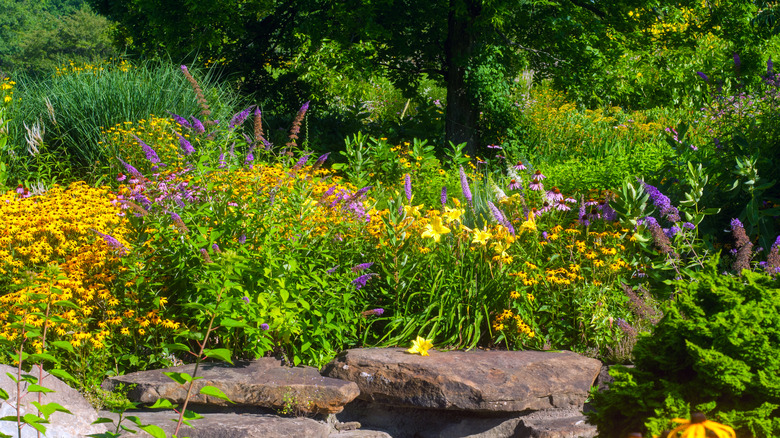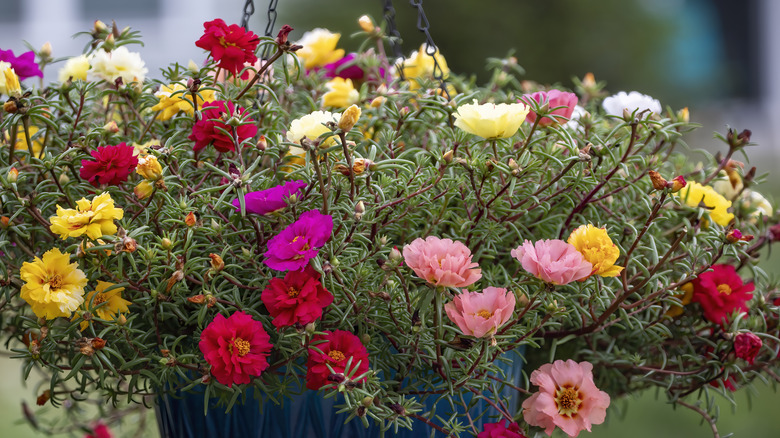Attract Butterflies & Hummingbirds With A Fast-Growing Self-Seeding Flower They Love
Are you looking to add some variety and color to your pollinator garden to lure in more bees and butterflies? Perhaps you'd also love flowering plants that will attract a few hummingbirds. While there are plenty of pretty, colorful annuals you can choose from, how about a fast-growing flower that's also self-seeding, which means you only have to plant it once and it will come back again year after year? This dream plant for busy gardeners is known as the moss rose (Portulaca grandiflora), and if you haven't grown it before, you're going to adore the masses of yellow, pink, orange, purple, red, and white blooms it will adorn your yard with — and you won't be the only one. Hummingbirds are attracted to the brightly colored blooms of moss rose plants, so you can use them to entice more of these adorable feathered friends to your garden.
As a bonus, moss rose is also one of several flowers that even the worst gardeners can handle, thanks to how easy it is to grow. What you'll find most intriguing is that the flowers only open when the sun is shining and close during the night, meaning you'll need to grow this beauty in full sun to appreciate those gorgeous blooms. Another benefit of growing moss roses is that the plants have succulent leaves, so they're quite drought-tolerant. Of course, this also means that they need really well-drained rocky or sandy soil.
How to use moss rose in your pollinator garden
Moss rose only grows to a maximum height of around 12 inches, so it's ideal for use as a filler plant or ground cover among your other taller-growing species. It would also look superb planted as a border around your flower garden, where you can enjoy the colorful flowers all summer long. These succulent plants are perfect for growing in containers as well, to brighten up those sunny spots around your yard where butterflies and hummingbirds like to visit. In fact, moss rose is one of several drought-resistant flowers perfect for hanging baskets.
This lovely species is easy to start from seed indoors as long as you use peat pots so that you don't disturb the roots when you transplant the seedlings out in the garden. Better yet, you can easily just scatter some seeds over the soil once all danger of frost has passed, and you should see the sprouts start to appear in around two weeks. Make sure not to cover the seeds, as they need light to germinate, but do keep the ground fairly moist until the plants come through. Once the plants are growing, they need minimal care except for a bit of watering during extended dry spells to keep those beautiful flowers blooming. This easy-care annual is definitely one garden flower that will have summer beds bursting with color and buzzing with pretty butterflies and gorgeous hummingbirds.

